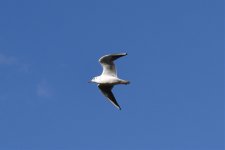Apodidae49
Well-known member
After a year with the D5600, I have the opportunity to upgrade to a D7200 body. I am trading in my 5600 and the 18-55 kit lens for a used body in vgc and have my 18-200 DX VR2 and 70-300 DX VR to use with the new camera.
At the moment I’m on the Ria Formosa in Portugal pursuing birds and I think the way forward, in my hobby, is a longer zoom and I just happen to have a significant birthday upcoming at the end of the year and a big lens may be in the gift stakes.
As someone remarked to me, this time last year, the ergonomics of a Tamron 150-600 on a D5600 may be a bit of a push so the D7200 beckons.
At the moment I’m on the Ria Formosa in Portugal pursuing birds and I think the way forward, in my hobby, is a longer zoom and I just happen to have a significant birthday upcoming at the end of the year and a big lens may be in the gift stakes.
As someone remarked to me, this time last year, the ergonomics of a Tamron 150-600 on a D5600 may be a bit of a push so the D7200 beckons.






